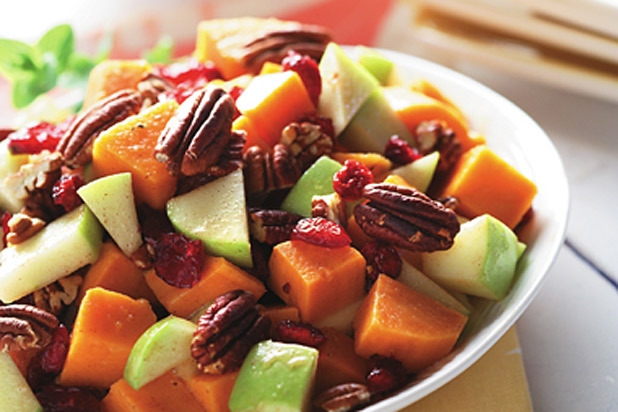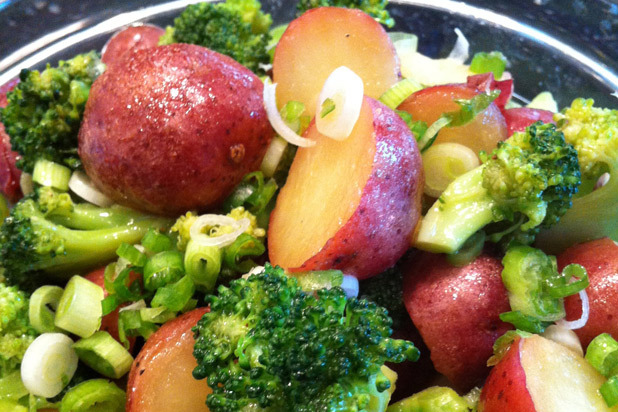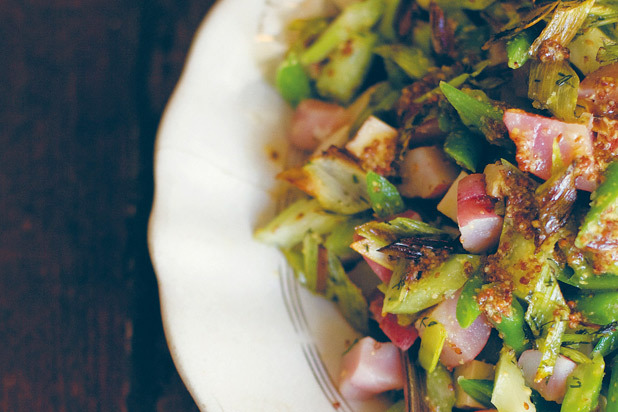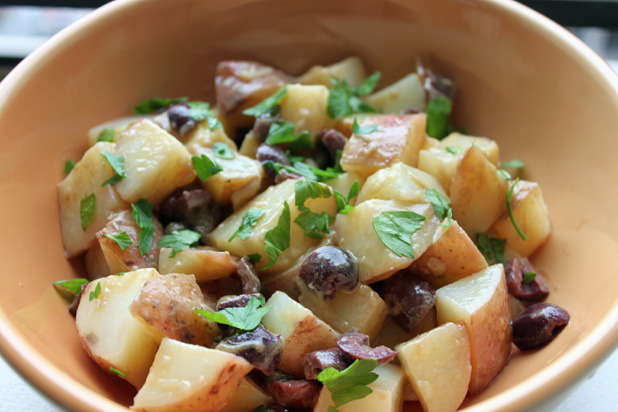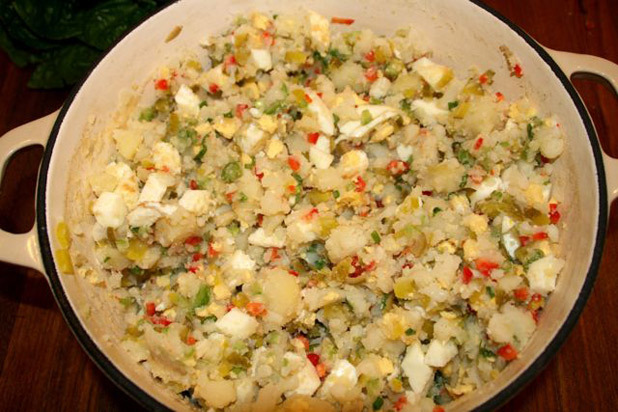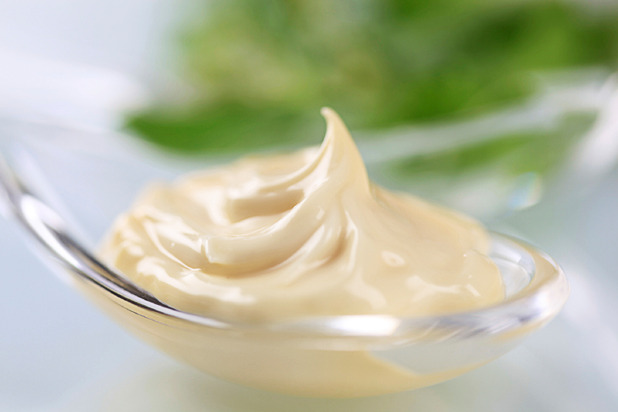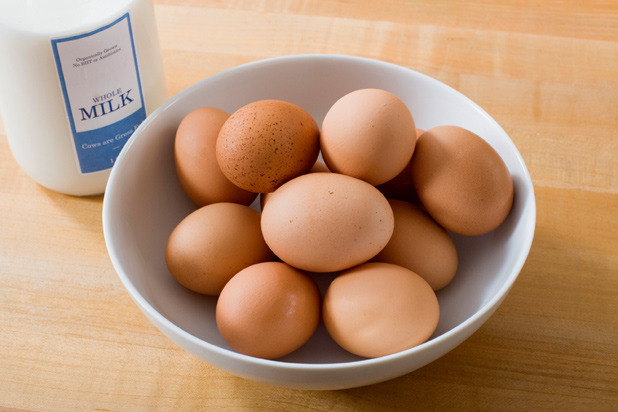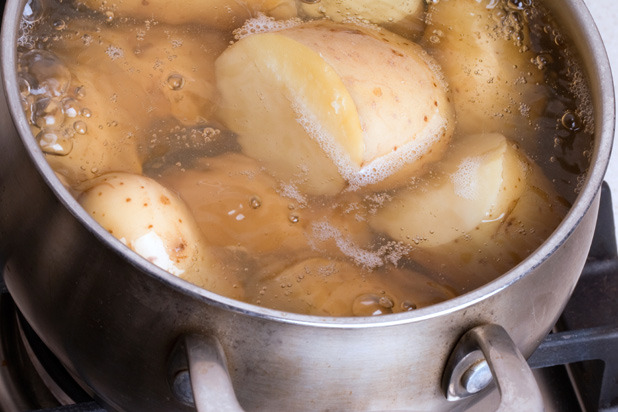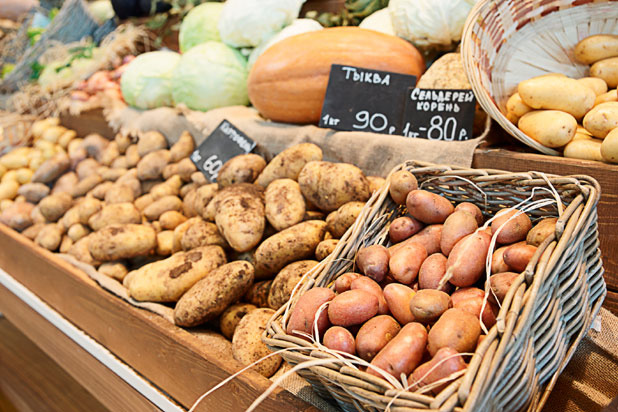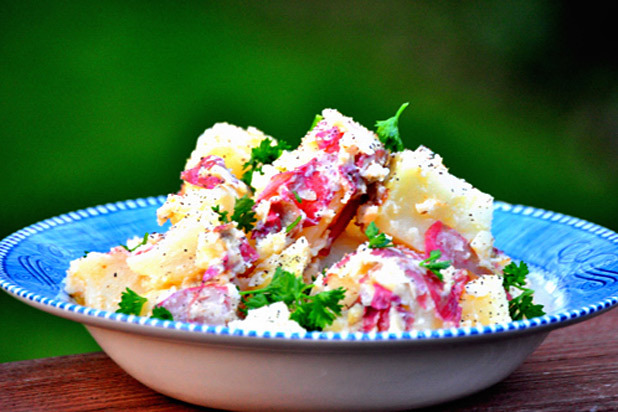Making Potato Salad Healthier Slideshow
1. Use Red or Sweet Potatoes
Red potatoes have a lower glycemic index than other types of potatoes, meaning they won't spike blood sugar as quickly as others. Yukon Gold or other waxy potatoes are great as well, and sweet potatoes are even better since they contain more fiber, iron, magnesium, vitamin A, and beta carotene by weight than their regular counterparts.
2. Keep the Skins On
Avoid peeling the potatoes since the skin contains fiber that will slow the release of sugar into the bloodstream.
3. Add Another Vegetable
Adding another vegetable, such as broccoli or celery, can add more fiber and help balance out the natural sugar found in the potatoes. More fiber can help you feel satiated with fewer servings. Also, try replacing some of the cooked potatoes with cooked cauliflower (you can cook them together). After draining, return them both to the pot and cook for a few minutes over medium heat to dry them out a bit. Cauliflower contains a lot of moisture, but this will help prevent watery dressing.
4. Use Olive Oil and Lemon Juice
Instead of a heavy mayonnaise, try using a combination of olive oil together with lemon juice, vinegar (balsamic, red-wine, white-wine, or sherry all work very nicely), and perhaps some mustard (try whole-grain or Dijon) to make a flavorful dressing without mayonnaise.
Click here to see the Potato Salad with Olives, Capers, and Mustard Vinaigrette Recipe.
5. Try Greek Yogurt
A combination of Greek yogurt and fat-free sour cream is a tasty, healthy alternative to mayonnaise. Greek yogurt is preferable to regular yogurt because it contains more protein and therefore helps to slow the release of sugar into the bloodstream.
6. If Mayo Is a Must…
If it really doesn't seem like there's an acceptable substitute for mayonnaise in the recipe, just try using less, and make sure it is made with canola oil since it is heart-healthy and low in saturated fat. Most store-bought mayonnaise is made with canola oil these days, but it doesn't hurt to check the label.
7. Easy on the Eggs
Limit the amount of whole eggs if adding eggs, or try using a pasteurized egg-white product to cut down on the calories and cholesterol.
8. Don't Overcook the Potatoes
Overcooking the potatoes releases more starch, which ultimately breaks down into simple sugars which can spike blood sugar levels. Cook them just until fork-tender.
9. Don't Use Old Potatoes
Potatoes that have been sitting around on store shelves for a while tend to contain more starch than freshly harvested potatoes. And more starch means more simple sugars when they are broken down by the body. Look for potatoes in farmers markets when possible, since they've often spent less time on a truck getting from the farm into your hands than when shopping at a supermarket.
10. Use Herbs and Spices
Herbs and spices can add a whole new dimension of flavor and help avoid the caloric penalty that comes with using traditional potato salad toppings. Try using a combination of herbs to make a light herbal dressing, or simply chop them up and add them straight into the salad. Plus, they often pack a nutritional punch with vitamins and minerals.
Click here to see the Potato Salad with Parsley Pesto Recipe.
